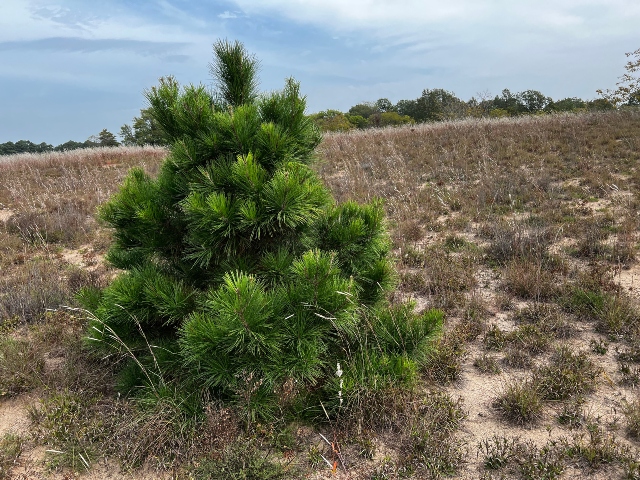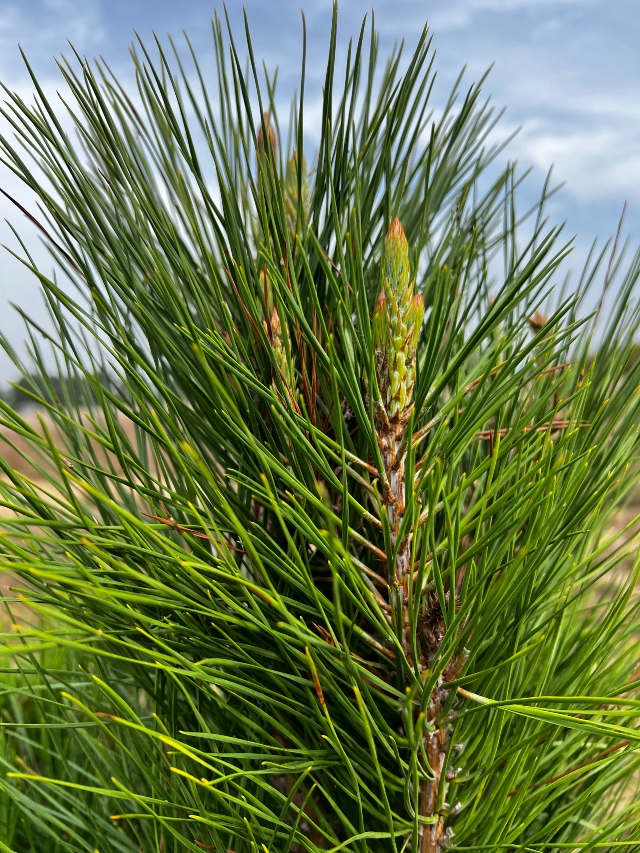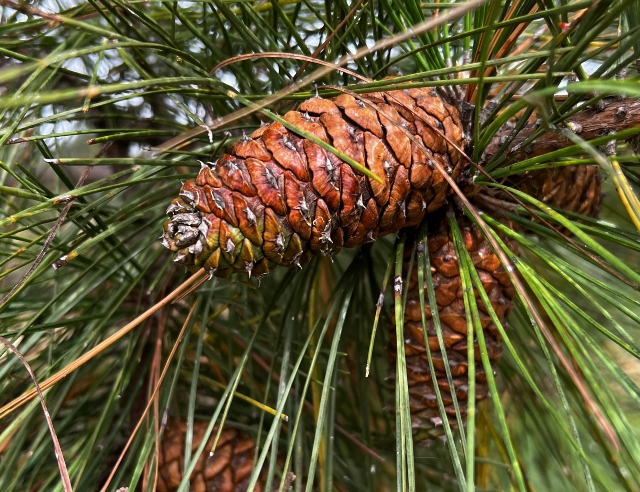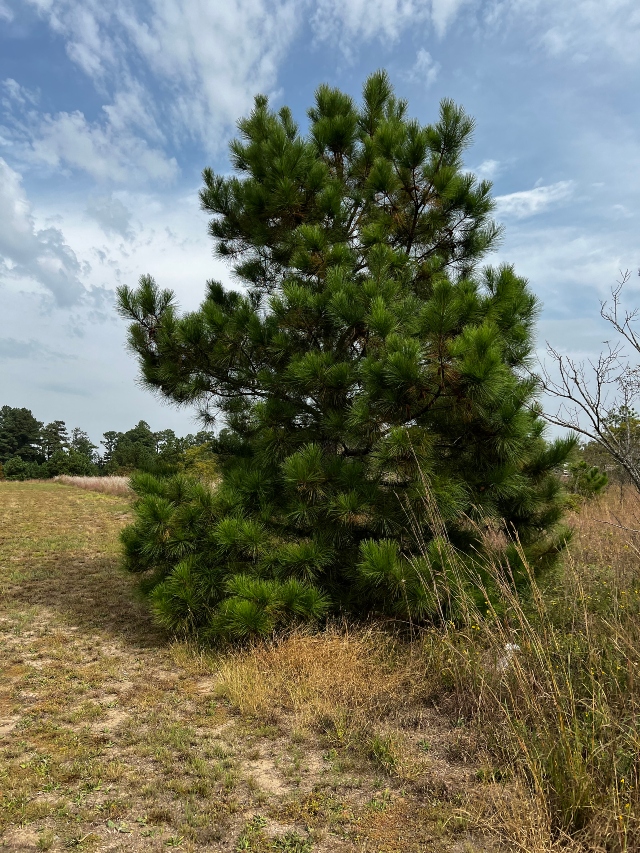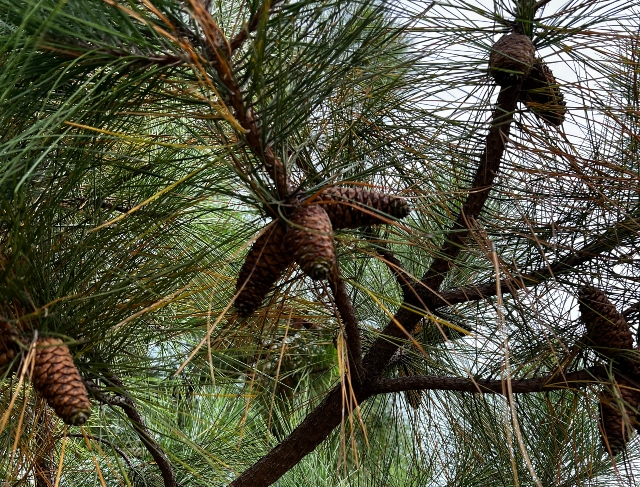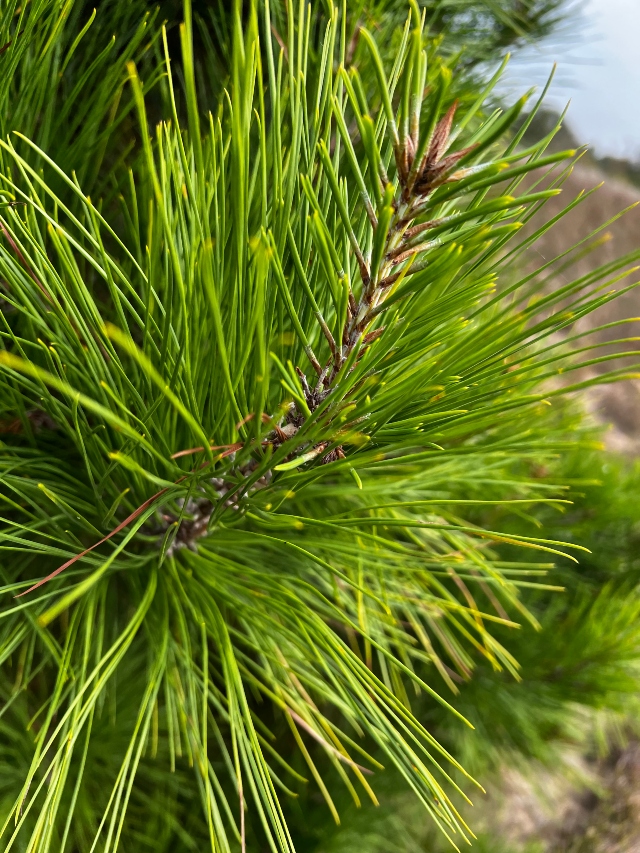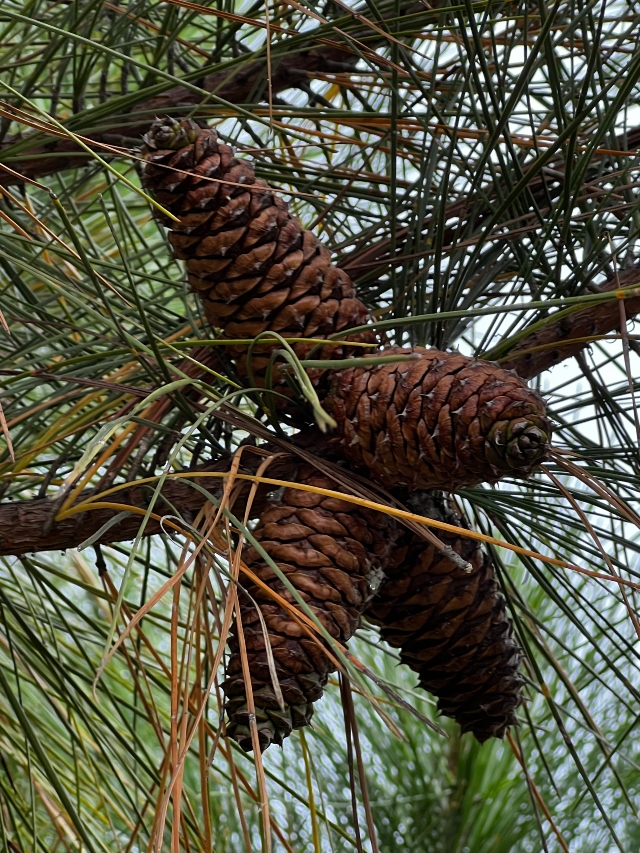While exploring a sand prairie in Missouri, I came across a couple examples of this tree. European Black Pine (also called Austrian Pine) was one of the early tree introductions into the United States, first reported in cultivation in 1759. Today, it is one of the most common introduced ornamentals in the United States.
This is a large coniferous evergreen tree, growing to 65–180 feet high at maturity and spreading 20 to 40 feet wide. The bark is gray to yellow-brown, and is widely split by flaking fissures into scaly plates, becoming increasingly fissured with age.
At maturity, its brown cones are about three inches long, and have small prickles on the backside of their scales. They spread their scales to release their seeds, and remain on the tree for up to several years.
European Black Pine is a tree of the Mediterranean forests, woodlands, and scrub biome. The majority of its range is in Turkey. It needs full sun to grow well, is intolerant of shade, and is resistant to snow and ice damage.
In the United States and Canada, it is planted as a street tree, and as an ornamental tree in gardens and parks. Its value as a street tree is largely due to its resistance to salt spray (from road de-icing salt) and various industrial pollutants.
During the late 1950s and early 1960s, when demand for natural trees was extremely high, its rapid growth, deep green color and low cost made it briefly a popular Christmas tree, but the extreme length of the needles (making it very difficult to decorate) soon led to its fall from favor.
Although not native, this tree has a long and interesting history in the United States.

